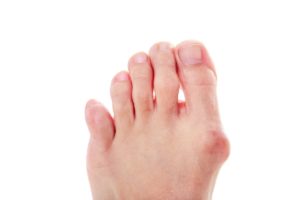
What is a Foot Bunion?
Originally posted on https://familyfootcenters.com/what-is-a-foot-bunion/
Our feet bear the brunt of our weight, which makes sense why an overwhelming 77% of Americans suffer from foot pain. If it’s serious enough, it can have a significant impact on your daily life, even if you’re not very active. One of the things that might be causing you pain is a foot bunion. But what is it, what causes it, and how can you treat it? We’ll discuss all these points in this article.
A foot bunion is when your big toe grows a bony bump on the side, right at the second joint. if you look down at your feet and see a bump outside the bottom of your toe, chances are, you have a bunion.
There is also something called a bunionette. These are smaller versions that grow on the sides of your pinky toes.
If either your bunion or bunionette is advanced, your toe can end up turned in or even overlapped over the neighboring toe.
What Are the Symptoms?
When you have a mild bunion, you usually feel little pain associated with it. However, there may be swelling, soreness, redness, or all of these symptoms occurring around your big toe.
You might’ve also developed corns or calluses on your big toe and the second toe. This is because they’re close together and rub against each other when you’re walking.
If things get serious enough, you might not be able to move your big toe. If you have arthritis, this can make the bunion feel worse.
What Causes Bunions?
You can develop bunions as a result of genetics. For example, you might be born with it, or you have a health condition that affects your joints, like rheumatoid arthritis.
You can also get bunions from wearing ill-fitting shoes. If your toes are cramped, then your big toe turns inward to compensate for the lack of space.
How to Treat Bunions
If you’ve noticed foot pain in your big toe, you might want to change your footwear, especially if you have shoes that squeeze your toes together. This means swapping your high heels for more ergonomic footwear.
To ease your pain, you can try icing your foot to also bring down the swelling. There are special pads made for bunions, but you should consult a podiatrist first, since incorrect usage can worsen the condition.
Speaking with a podiatrist is a good idea because they can assess your situation and see if you need further treatment, such as surgery. They can also address any complications like bursitis.
Get Help Today
Although a mild foot bunion may only cause mild pain or none at all, it’s possible for it to progress so far that you get bursitis. It can also lead to some more severe symptoms that may require surgery, especially if you have difficulty walking. So make sure to see a podiatrist for your bunions to ensure you get the proper treatment to correct them.
If you have a bunion and would like a podiatrist to take a look at, schedule an appointment today.
